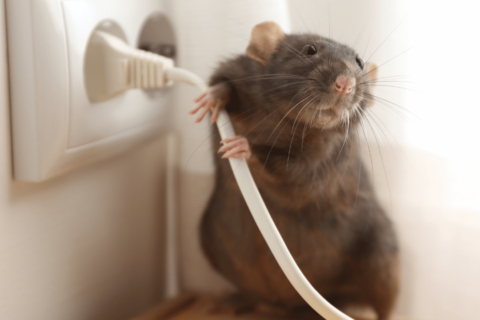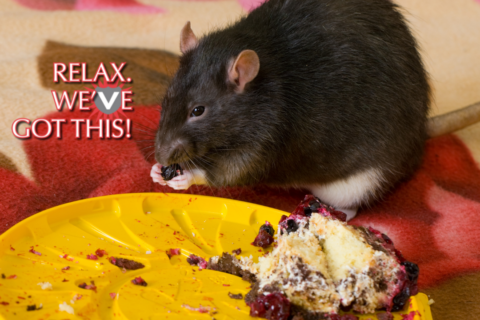How Do Squirrels Get Into Homes
Squirrels are a common frustration for homeowners who think they’ve sealed every entry point, yet they still find a way in. At Vogelsang Pest Management, we hear this all the time and understand why it happens.
They are clever and persistent creatures, and they can find entry points in places you’d never expect. Even the smallest gap can be an open invitation. Let’s look closer at how squirrels manage to get inside—and what you can do to stop them.
1. Attic
- Soffits & Fascia Boards: These areas are often overlooked but can be prime spots for them to sneak in. Soffits and fascia boards around the roofline can decay or shift, creating small gaps squirrels can exploit.
- Roof Returns: Squirrels can crawl into your attic if there’s any space between the roof and the wall. The returns are often overlooked in maintenance, making them an easy target.
- Gable Vents & Roof Ridge Vents: Vents are crucial for airflow but are also prime entry points. If vents are damaged or lack proper covers, they can easily wiggle through them.
- Chimneys: If not appropriately capped, chimneys are a perfect entry for squirrels, especially in the fall and winter when looking for a warm spot to nest.
2. Siding Corners
Squirrels often use the tiny gaps where two sections of siding meet. These corners can shift over time, allowing a squirrel to slip inside. Even a small crack is enough for them to gain entry, so regular inspection is key.
3. Gutters
Gutters filled with debris can provide a pathway and a nesting spot. Over time, debris can cause gutters to shift or separate from the roofline, giving squirrels an opening to climb up and access your attic or eaves.
4. Plumbing Vents
Plumbing vents that go through the roof are often not sealed properly, allowing squirrels to climb up and enter through these gaps. They’re attracted to the warmth and shelter, especially in colder months.
5. Improperly Installed Windows
Windows that weren’t sealed correctly during installation are another common entry point. Gaps around the frame can allow them to slip inside, particularly if the window hasn’t been adequately caulked or weather-stripped.
6. Wall Vents
Wall vents—especially those for dryer or kitchen exhausts—can be an easy access point for squirrels. If these vents aren’t securely covered with a mesh guard or sealed correctly, squirrels can squeeze through and into your walls or attic. They’ll often chew through the vent material to make their way inside.
7. Crawl Spaces
Many homes have crawl spaces that are rarely checked, which makes them an ideal entry point for squirrels. These spaces can develop gaps around the foundation, or older vents may allow easy access. Once inside, squirrels can move into walls or even the attic, where they start nesting.
Prevent Squirrels From Entering Your Home
Preventing a squirrel invasion starts with vigilance. A thorough inspection of your home’s exterior can help you identify potential entry points before squirrels do. Focus on areas like your roof, vents, and siding, and make sure all gaps are sealed.
If you’ve sealed every possible entry point and still notice signs of squirrels in your home, it’s time to call in the experts. Vogelsang Pest Management specializes in wildlife removal services in St. Louis, MO, and surrounding areas. Our team uses humane methods to remove squirrels and other pests safely. Call us today to ensure your home stays secure and pest-free!


